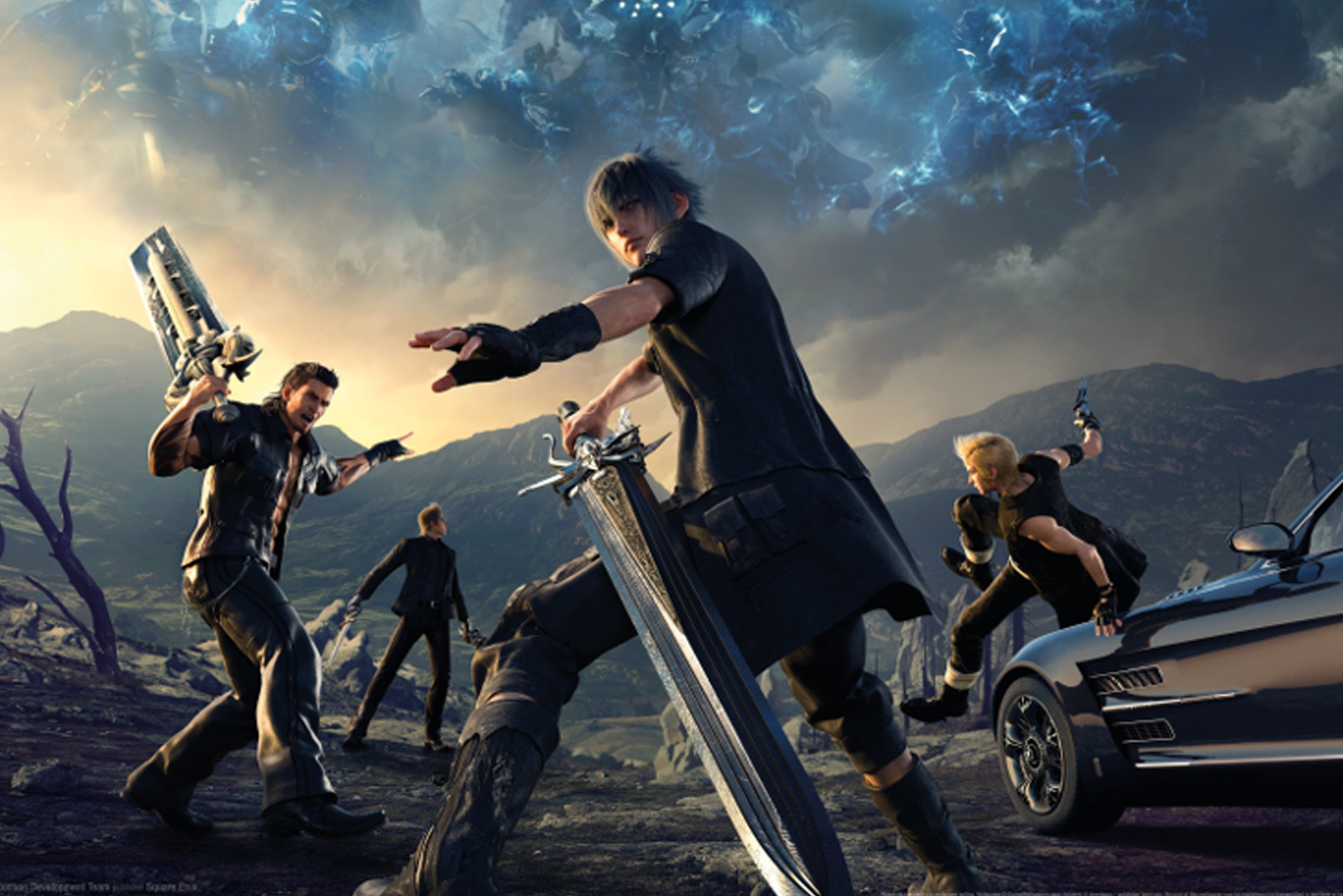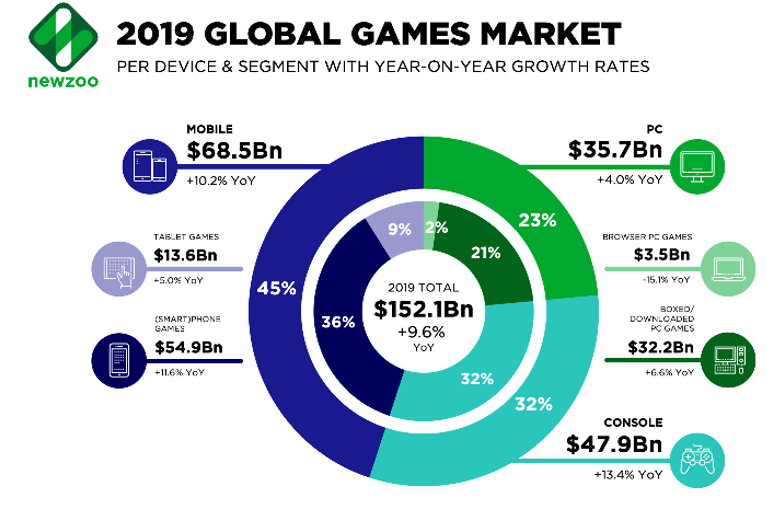Source: Limelight Networks, State of Online Gaming 2019
Escapism is the tendency to seek distraction and relief from reality by pursuing entertainment or engaging in fantasy. For many, gaming of the casual or puzzle genre allows for the passage of time during commutes and other ‘in-between’ moments. No demands, no expectations, no opponents. For others, gaming of the competitive genre allows us to battle against challengers to forget who we are and be someone totally different. Some would say we become who we ‘really are’: Are you timid? Are you bold? Do you take risks? What kind of risks do you take? Versus who you are in real life (‘irl’ for those gamers reading this report…).
The difference that gaming provides versus traditional movies and spectator sports is that gaming provides the opportunity to not only escape but participate in that escape. It is in this participation that gaming has the one-up on other forms of entertainment, and why it has become the leading form of entertainment globally. People love a story, but they also love shaping that story.
What are the barriers to entry in gaming?
In theory there are very few barriers; in practice, the big studios have an edge. There are those that would have you believe that any small studio can make a game, and cite Candy Crush, Angry Birds and other games as examples. The Witcher 3, the 2015 game of the year on Xbox, cost less than $15 million to develop and another $15 million or so to market.
These are the very rare successes, and slanted heavily to mobile. Many so called ‘triple A’ games take 2 to 4 years to develop with teams of 70 to 300 developers, leading to a total cost of about $15 to $150 million. That means a game needs to sell 2.5 – 3.5m units just to pay for development, much less make a profit.
Game success is akin to the movie business: the occasional indie film can generate a successful title, but none will reach the magnitude of success achieved by Titanic, Avatar, Lord of the Rings and Avengers: Endgame, not to mention the repeatability of success that is vital for longevity and talent retention.
Game development has some surprising real-world impact. Game companyUbisoft, the French studio behind Assassin’s Creed, is offering up its ‘over 5,000 hours’ of research of Notre-Dame during the French Revolution to assist in the cathedral’s reconstruction after the fire in April this year.
Distribution is also critical to success. Putting your game on Xbox or an app store is a relatively easy endeavour compared to getting it to stand out amongst thousands of similar games. Large publishers have an edge here, as they can outspend and out distribute through a combination of marketing spend and Steam/Twitch publishing.
A changing landscape
The way consumers engage with and through games is constantly changing. Not only does this result in higher overall engagement, but it also leads to entirely new segments of game enthusiasts.
- Distribution, traditionally via physical disks and cartridges, is rapidly moving to online downloads.
- Monetization is changing. No longer do consumers get charged upfront for the game, but are instead charged for in-app purchases (like most mobile games) or via subscriptions (Xbox Gold, Stadio).
- Infrastructure is changing. The rollout of 5G networks will mean a colossal boost to gaming speeds, increasing gaming occasions and playing frequency.
- Finally, consolidation in the industry is happening at an ever-increasing pace.
But…who to back in this changing landscape? With rapid growth and changes to distribution, monetization and infrastructure, our bet is on the one constant: back the content. With the right content, game sales and profits allow the firm to defend and procure developer talent, procure more content, monetise the content in a variety of ways and also navigate the changing distribution landscape.We found one firm, in particular, that has been able to achieve this.
Square Enix: The creator of the original Role-Playing Game
Square Enix is a Japanese video game developer, publisher, and distribution company known for its Final Fantasy, Dragon Quest, and Kingdom Hearts role-playing video game franchises, as well as Tomb Raider and Hitman action genre games. Its headquarters, which Flagship’s global portfolio managers have visited, are in Shinjuku, Tokyo.
Square Enix has a distinguished history as a gaming company. Its main franchise, Final Fantasy, is one of the best-selling video game franchises of all time with over $10 billion grossed since launch in 1987. The seventh instalment of the game (Final Fantasy VII) is one of the most successful games of all time and helped launch the Sony PlayStation.
Outside of Final Fantasy, the company’s Dragon Quest franchise has sold over 70 million copies and the Kingdom Hearts franchise has sold over 30 million. It is rare to see so many hits in a single company.
Why did we invest?
Square Enix is a company we know well. We have met the management and understand their business model. It has always looked fully priced but, in April we noticed a few critical things:
- Our weekly screening revealed the company was starting to look cheap versus peers and its own history
- Earnings expectations for upcoming fiscal years had been consistently falling
- The company’s profitability was lower than peers despite industry changes that would increase margins
After a closer look, we found that nearly all of the titles launched in the last two financial years (March FY2018 and March FY2019) have materially underperformed, failing to add to sales generated by the existing catalogue of titles. This means that all revenue is coming from the existing (pre-2018) titles, while EBIT (earnings before interest and tax) is depressed due to the development costs (which are all expensed) of the mediocre titles.
Going forward, Square Enix has an impressive launch line-up which should revive sales growth in its core titles, including Final Fantasy, Tomb Raider and Dragon Quest, with promising Final Fantasy VII Remake and Avengers titles confirmed for March and May 2020. Also, improving mobile game sales and the expansion of its massively multiplayer online games with the release of Final Fantasy XIV Shadowbringers will likely support sales this year.
The investment into content will furthermore support Square Enix’s longer-term strategy of diversifying revenue into new franchises and platforms, such as augmented and virtual reality, to increase sales. Along with the higher revenue, we expect cost optimisation on the distribution side, as well as new monetisation opportunities to drive higher earnings growth over the next 5 years. Regional expansion into emerging markets remains an opportunity as well.
Running the numbers, we found that if the company can achieve the midpoint of its revenue and profit target, it stands to earn EBIT of 45 billion yen in FY 2021. This put the share on 12.7x March 2021 earnings at our time of purchase.
Having met with Square Enix before, it was easy to use our screening to identify and act on the opportunity it presented. The investment opportunity was typical for us: short term noise had unduly impacted an iconic business, and upon careful research, we were able to execute on the opportunity to buy a great business at a bargain price.






















